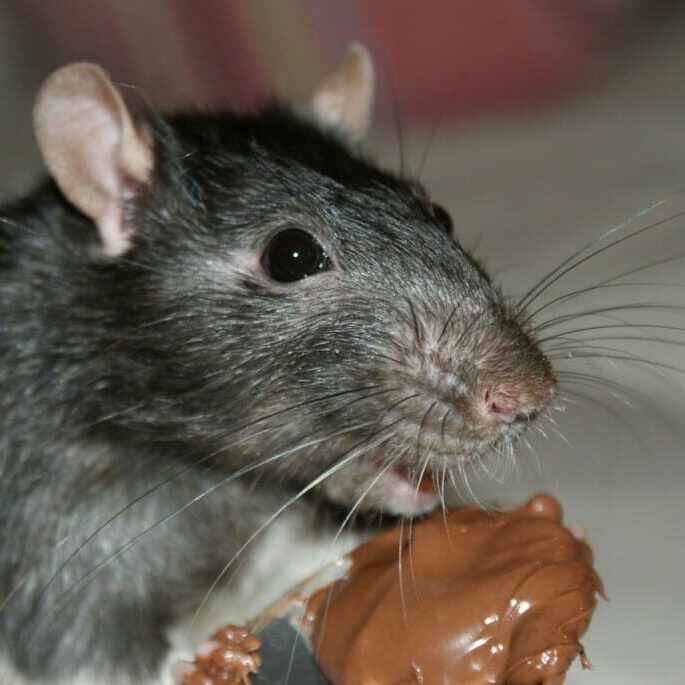

Rats and mice can be heard in the ceilings of the LSC, says Simon Gadbois. (Photo by Ichtertz Agnes via PublicDomainPictures.net)
Rats, affectionately known around the biology wing as Rattus rattus, have made their homes in the Life Sciences Centre (LSC) at Dalhousie home for years — but not just in labs.
Rodents have traditionally been Dal scientists’ favourite participants for much of the research that goes on in the Life Sciences Centre. Recently, though, rodents have been spotted more often out of the lab than in. This isn’t just unpleasant for the students, faculty and staff that work and study in the LSC; it’s also a potential problem for the many labs and experiments running at any given time in the building.
“They’re everywhere. Everywhere,” says Gadbois. “There’s no stopping it.”
In the psychology and biology wings there are labs that frequently contain animals—such as the canine research lab. Pests of any sort could be a major nuisance. And with thousands of people passing through the LSC every day, the health implications of encountering rats and their remnants can be serious.
Gadbois says that there’s no way of knowing what effect the rodents might have had on animals — but it’s not something the faculty is worried about. “It’s never been a massive issue,” says Gadbois.
It’s not difficult to understand how the LSC might have become home to the rodents. Mike Wilkinson is the manager of Environmental Services at Dal and is in charge of efforts to control the pests.
“We have an ongoing battle against them across the campus, for any number of reasons,” says Wilkinson, “one of them being that some of the buildings are really old. To get them sealed up to the point where rats and mice can’t get in is pretty difficult.”
“Rats and mice can get through a tiny, tiny little hole. Or if there’s no hole they make a new hole.”
Professors and students engaged in late-night research and studying have grown accustomed to seeing the odd rat scurry across normally bustling hallways and lecture rooms after most people have left for the day.
“There’d be droppings—or you’d actually see an animal. For people, that’s the worst thing,” says Wilkinson.
Or maybe not. A few years ago, noticing that his cup tea of tea tasted fuzzy, Gadbois emptied a kettle out. “The teabag was a mouse,” says Gadbois.
Many students find the thought of rats crawling around lecture halls at night a little uncomfortable. Jacqueline Wigle, in her second year at Dal studying psychology and theatre says she doesn’t like the idea because of the rodents’ disease-carrying reputation. But she says that she’s “not terribly bothered by it.”
Rats are normally an issue that a homeowner will deal with as quickly as possible. But the rats that make their homes at Dal have been here for a while—and aren’t expected to be leaving anytime soon.
“It’s something we’re always going to be dealing with,” says Wilkinson.
The best way to keep the vermin at bay isn’t judicious use of chemicals and traps (although they are used by contractors working for Dal), says Wilkinson, but cleanliness: denying the rats and mice a food source.
Despite facilities management’s best efforts, it’s nearly impossible to keep the many halls of the school completely free of rodent-enticing food at all times. Wilkinson has little hope of winning the battle any time soon.
“Even if you’ve just got one mouse dropping on your desk, it would be unacceptable. So to get to a level where that never happens…Well, that’s going to be difficult in these old buildings—but that’s definitely what we strive for.”






